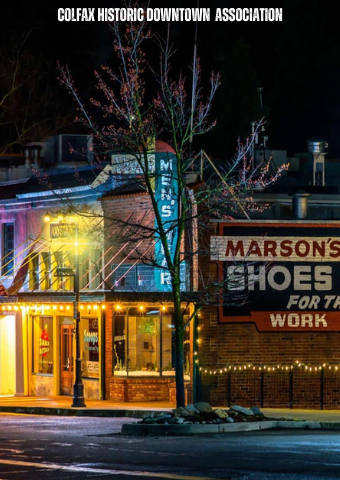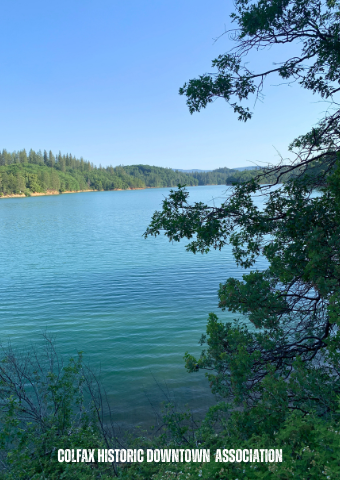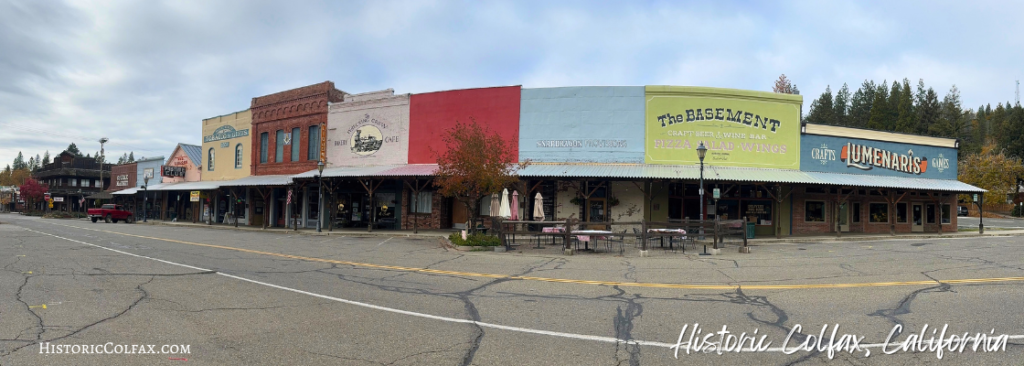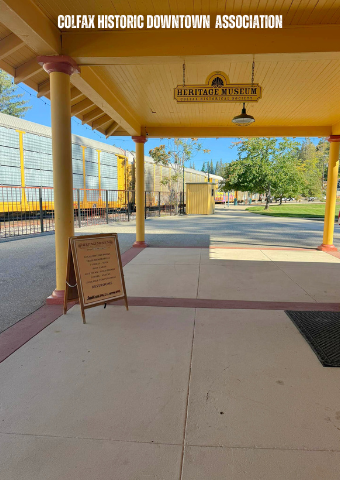Embracing Change While Preserving History: A New Chapter for Historic Downtown Colfax
Downtown Colfax is experiencing a notable shift. With an influx of new residents and a growing interest in the town’s unique character, the need to preserve its rich historical identity has never been greater. The Historic Colfax Downtown Association recently held a community meeting that sparked deep conversations about the value of preservation, the tools available for protecting heritage, and the importance of telling Colfax’s story to the world.
Understanding What We Have Before It’s Gone

As development continues to unfold, now is the time to take inventory of our historical assets—buildings, stories, and community spaces that define Colfax’s legacy. Change is a part of life. Fires, renovations, and time itself naturally shape our town. But when approached thoughtfully, change doesn’t have to come at the cost of character.
Preserving Colfax’s architectural and cultural identity means protecting the essence of our shared past while making room for a thriving future.
What’s in Place Now?
The City of Colfax already has a Historic Overlay Zone in place, which means design guidelines exist for properties downtown. These are primarily focused on the exteriors of buildings—ensuring that any modifications maintain the architectural integrity and visual cohesion of the area. However, as discussed in the meeting, Colfax does not currently have a historic preservation ordinance, nor a local register of historic properties, which limits broader protections and benefits.
What Could Come Next?
Participants discussed the possibility of establishing Colfax as a Certified Local Government (CLG). Achieving this designation from the state of California would open the door to grants and technical assistance dedicated to historic preservation. It requires having a preservation ordinance, a commission to oversee historic reviews, and a local register.
Another exciting development: The City of Colfax recently completed a preliminary inventory of potentially historic properties. While not a formal designation, this list is the first step toward understanding and eventually protecting structures of significance.
Why Formal Designation Matters
Registering buildings on the National Register of Historic Places or the California Register of Historical Resources can provide access to financial incentives, such as:
- Federal Historic Tax Credit (20% back on qualified income-producing renovations)
- California Historic Tax Credit (for both commercial and residential buildings)
- Mills Act Program (not yet adopted in Colfax), which can reduce property taxes significantly for historic homeowners
While these designations are generally honorary and non-regulatory, they send a strong message: Colfax values its history and is committed to preserving it. They also provide property owners with flexibility under the California Historical Building Code, allowing for adaptive reuse projects that maintain historic integrity.
Local Voices, Local Value
The conversation revealed a shared community passion for Colfax’s heritage—from century-old storefronts with underground tunnels to the beloved Colfax theater. Residents offered first-hand stories, including accounts of buildings rebuilt after historic fires and hidden basements that once served as living spaces and workspaces.
One local described their building as the town’s original print shop, expressing excitement about highlighting its story through a walking tour or historical plaque. The Historic Colfax Downtown Association members shared a project they are working on that would incorporate leveraging technology and history. They are also actively working on expanding the historic walking tours in Colfax. These efforts aim to create engaging, self-guided experiences for visitors by bringing the stories of historic landmarks to life through modern tools and storytelling methods. By blending innovation with tradition, the goal is to offer a richer, more immersive understanding of Colfax’s unique past for both residents and tourists alike.
Looking Ahead: A Historic District for Colfax?
The most promising idea discussed was creating a formal historic district in downtown Colfax. This would allow property owners to benefit collectively from tax incentives and grants while preserving the collective charm and history of the area. It’s also a more affordable and manageable approach than individual property listings.
Establishing a historic district requires community support. A majority of property owners within the district’s boundaries must agree to participate. Many attendees expressed strong interest, but also emphasized the importance of clear communication and education about the benefits versus perceived restrictions.
Turning History Into Tourism
As other California towns like Grass Valley and Nevada City have shown, historic preservation isn’t just about nostalgia—it’s an economic driver. By promoting heritage tourism through storytelling, signage, and curated experiences, Colfax has a unique opportunity to boost its downtown economy while honoring its roots.
There’s already evidence of interest. Visitors are arriving with lists of historic addresses, seeking out stories and snapping photos of unique architecture. By providing accessible resources—both physical and digital—we can turn casual curiosity into meaningful engagement.
What’s Next?
The Historic Colfax Downtown Association is committed to continuing this conversation with city leaders, local businesses, and residents. If you’re a building owner, local historian, or just passionate about Colfax’s legacy, your voice matters. Let’s work together to shape a future that respects our past and inspires future generations. Reach out to us and let’s connect!




